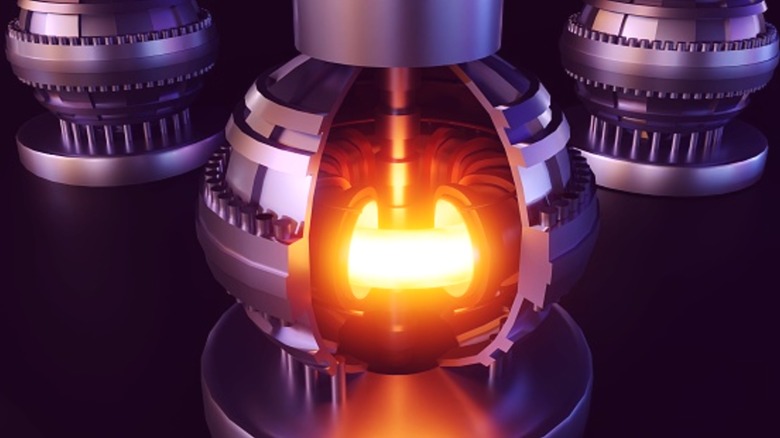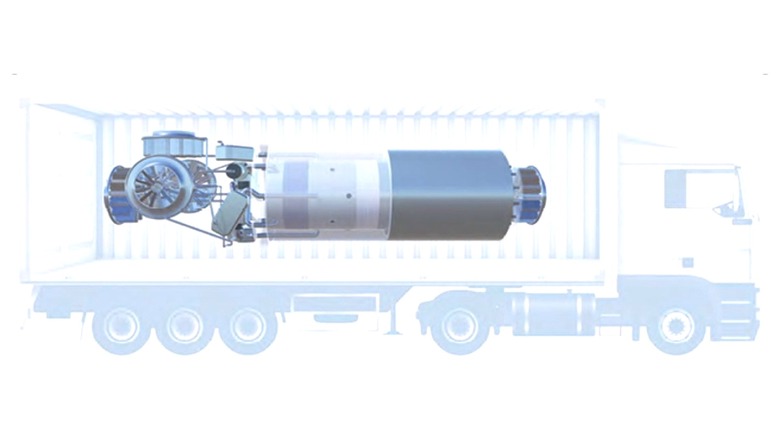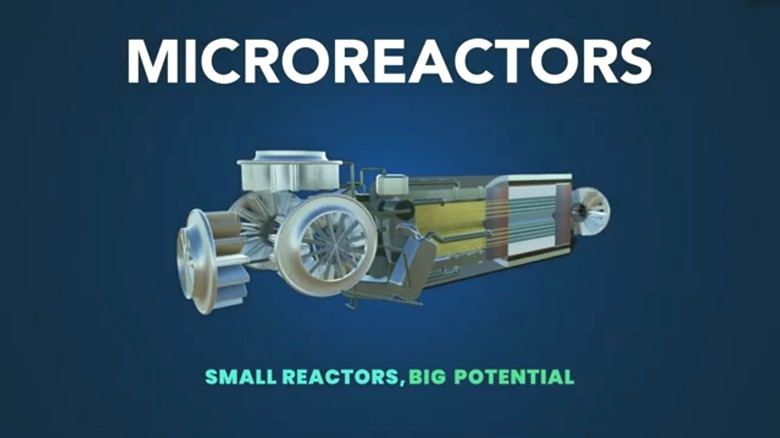The US Army Is Building A Nuclear Microreactor — Here's Why That's Important
When you think of nuclear reactors and the military, odds are the U.S. Navy comes to mind. After all, the Navy boasts some of the best mobile nuclear reactors in the world, and it has a host of sailors trained to operate and maintain them. The Army, on the other hand, has no nuclear technicians, nor does it have any large or small reactors in its arsenal, as they've not been needed in the past. That's about to change, as President Donald Trump issued an Executive Order to have the Army develop its own microreactor.
Executive Order 14299, "Deploying Advanced Nuclear Reactor Technologies For National Security," was issued on May 23, 2025, and instructed that "The Secretary of Defense, through the Secretary of the Army, shall establish a program of record for the utilization of nuclear energy for both installation energy and operational energy." What this boils down to is an order to have the Army develop and produce an initial nuclear microreactor that will power a domestic military base or installation by end of fiscal year 28: September 30, 2028.
Previously, the Army powered its domestic and foreign facilities through a variety of means, be they tapping into a local grid, utilizing renewable energy, providing fuel to a plethora of generators, and other options. By advancing electrical production requirements into nuclear energy, the Army will reduce the need to ship fuel to forward operating bases, and it will conceivably enable the branch to empower itself without any reliance on another entity. This could be a game-changer for the Army, and should the service succeed in developing, producing, installing, and maintaining its own reactors, energy independence will be significantly easier to attain.
The plan
While EO 14299 is new, the plan to produce a viable microreactor has been in the works since 2016. That initiative is called Project Pele, which is intended to develop a new 1-5 megawatt nuclear microreactor capable of sustaining power for at least three years under full operation. While nuclear power has been around for decades, creating an entirely new type that is not only capable of powering a base but is also transportable is no easy task. By 2022, the plan was put into motion to produce such a reactor, which would be the first electricity-generating Generation IV reactor built by the U.S.
China beat the States to the punch when it revealed its first Gen IV reactor, the HTR-PM, in 2021. President Trump's EO pushes up the timeline a bit by requiring a functional mobile reactor by 2028. On the importance of the project, Dr. Jeff Waksman, the Project Pele program manager, said, "Advanced nuclear power has the potential to be a strategic game-changer for the United States, both for the DoD and for the commercial sector. For it to be adopted, it must first be successfully demonstrated under real-world operating conditions."
Presently, no facility has been identified as a testing location for a new microreactor. The project calls for a 40-ton reactor that can be shipped via C-17 Globemaster III aircraft in three to four 20-foot shipping containers. While that may sound heavy and amount to a lot of equipment, it's comparatively small and light when looking at stationary reactors. In June 2022, $300 million was awarded to BWX Technologies to design and build the reactor.
The plausibility
While the U.S. has 54 operational nuclear power plants (not including those aboard naval vessels) powering the country, America isn't in the habit of building new nuclear power plants. This is due to a number of factors, including time, regulations, and, most importantly, cost. It can cost as much as $10 billion for a new reactor. They also take a relatively long time to construct and make operational, which can be problematic for the Army's new plan. EO 14299 doesn't just stipulate that the Army will produce a reactor by 2028; it orders the development of new technology, which is costly and time-consuming.
While having a working 1-5 megawatt microreactor in three years is certainly desirable, making that happen could be challenging. EO 14299 and others help pave the way by loosening regulations, but even with the red tape being cut, the technological obstacles don't evaporate. While EO 14299 outlines several goals and paths to complete them, much of it is implausible, with the schedule demand being the most difficult to reach. The other issue is cost, as EO 14299 doesn't outline a source for new funding, which is almost certainly going to become an issue.
Developing new reactors, whether they're older generation models or something new, is incredibly expensive. That's especially true of new methods of producing energy that are ideally more efficient than older generation models. Without additional financing, it's unlikely the Army will be able to reach the goals outlined in EO 14299, and the other elements outlined in the order will also be difficult to attain for the same reason, so President Trump's EO may be a lofty goal that likely won't come to fruition during his time in office.


